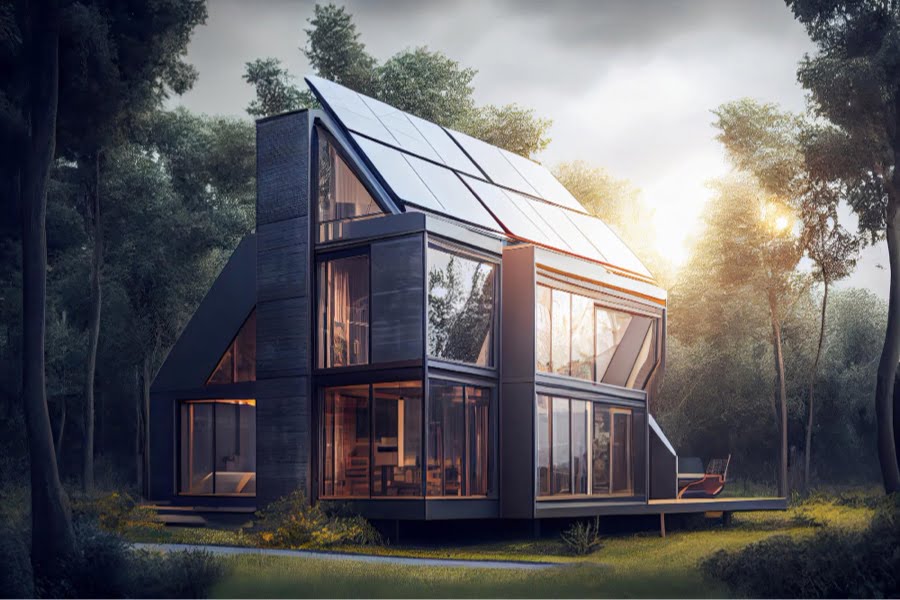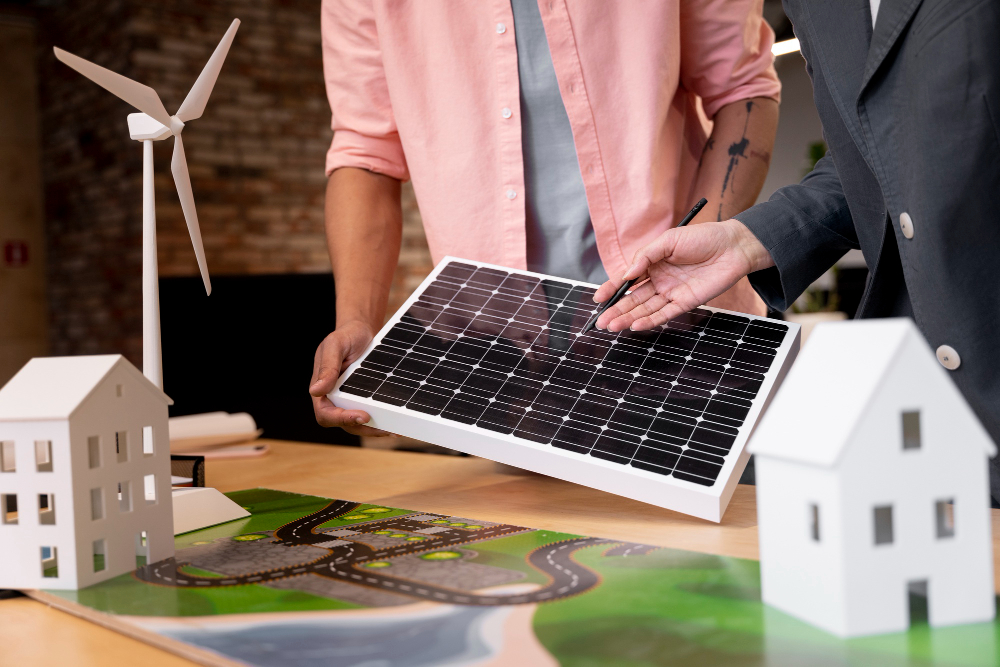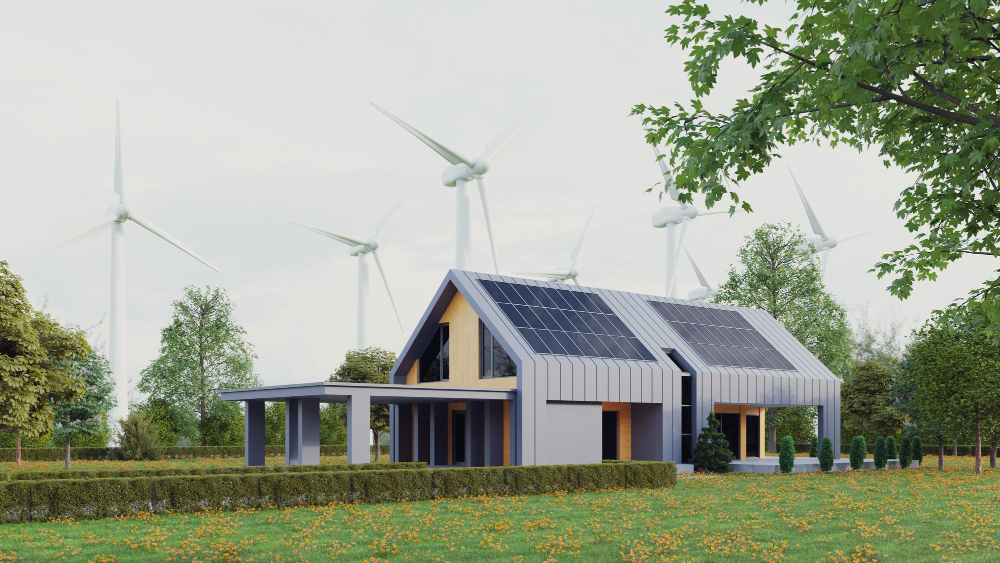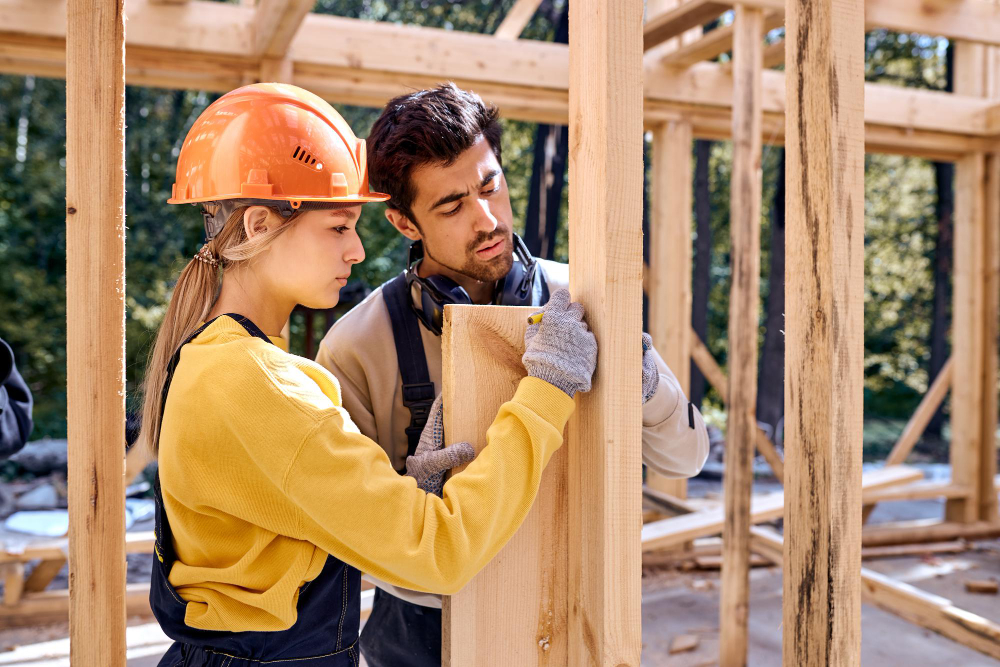Last updated on
Here are the top seven innovative home design ideas for sustainable living. Read on!
Welcome to the world of sustainable living, where creativity and innovation collide! If you’re looking for ways to reimagine your home and make it more eco-friendly, we’ve got you covered.
In this blog post, we’ll share 7 beautiful and innovative design ideas that will not only enhance the aesthetic appeal of your house but also reduce its carbon footprint.
From vertical gardens to recycled materials, get ready to be inspired by our unique approach to sustainability.
So let’s dive in and discover how small changes can make a big impact on the environment while transforming your house into a green oasis!
Use of Natural Materials

There is an increasing trend in sustainable living to use natural materials in construction and design. This is because natural materials are renewable, recyclable, and often have a lower carbon footprint than synthetic materials.
In addition, natural materials can help to create a more comfortable and healthy indoor environment. Some of the most popular sustainable materials for home construction and design include bamboo, cork, wool, hemp, straw bales, and earth.
These materials can be used for everything from flooring and walls to furniture and insulation. Natural materials are also becoming more popular for exterior features such as siding, roofing, and decks.
Passive Solar Heating and Cooling

Passive solar heating and cooling is one of the most efficient and sustainable ways to heat and cool your home. By harnessing the power of the sun, you can dramatically reduce your energy consumption and lower your carbon footprint.
There are a few different ways to incorporate passive solar heating and cooling into your home design. One way is to orient your home in such a way that it maximizes sunlight exposure in the winter and minimizes it in the summer.
Another way is to use thermal mass materials, like concrete or stone, to absorb and store heat energy from the sun. You can also install solar panels to generate electricity, which can then be used to power air conditioners or other appliances.
Building Contemporary Homes

There is an increasing trend in the construction of contemporary homes that focus on sustainable living. This means that building contemporary homes is meant to make homes more energy-efficient, use less water, and produce less waste. There are many benefits to sustainable living, including reducing your carbon footprint and saving money on utilities.
There are a number of ways to make your home more sustainable. One option is to install solar panels to generate your own electricity.
You can also install rainwater harvesting systems to collect and reuse rainwater for watering plants or washing clothes. Gray water systems recycle used water from showers and sinks to flush toilets or water plants. If you’re looking to build a new home, there are a number of green building materials and technologies that can be used to create a more sustainable home.
Reclaimed or Secondhand Building Materials

There’s no need to buy all new materials when you’re looking to renovate your home. Reclaimed or secondhand building materials are a great way to add character and sustainable design principles to your space.
Here are some ideas for using reclaimed or secondhand building materials in your home:
- Exposed brick walls can add a rustic charm to any room. If you’re lucky enough to live in an older home with exposed brick walls, consider leaving them as is or adding a fresh coat of paint.
- Reclaimed wood floors or beams are another great way to add character to your home. You can find these materials at salvage yards or online retailers.
- If you’re looking for something unique, try using recycled glass bottles or tin cans as vases or planters. You can also use mason jars as drinking glasses or storage containers.
Rainwater Collection Systems

A rainwater collection system is a great way to reduce your water bill and help the environment. There are many different types of rainwater collection systems, so you can choose the one that best fits your needs.
The most common type of rainwater collection system is a barrel or cistern. These can be made from a variety of materials, but they all work by collecting rainwater from your roof and storing it in a large container. You can then use this water for watering your garden, washing your car, or even drinking if you have a filter system.
Another type of rainwater collection system is called a greywater system. This type of system collects water from your shower, sink, and washing machine and uses it to water your plants or flush your toilets. This is a great way to save water, as well as reduce the amount of wastewater that goes into our sewage systems.
Geothermal Heat Pumps

Geothermal heat pumps are one of the most efficient and eco-friendly ways to heat and cool your home. They work by using the Earth’s natural heat to transfer heat into or out of your home, depending on the season. Geothermal systems are incredibly durable and can last for decades with proper maintenance, making them a great long-term investment for your home.
Geothermal heat pumps are powered by electricity but can save you money on your energy bills since they don’t use as much energy as other heating and cooling options. They also require very little maintenance and are extremely quiet when running. In addition, geothermal systems don’t produce any emissions, making them one of the greenest options available.
Renewable Energy Sources

There is an increasing trend around the world for people to want to lead more sustainable lives. One of the ways people are doing this is by making their homes more sustainable. This can be done in a number of ways, but one of the most effective is to use renewable energy sources.
There are a number of different renewable energy sources that you can use in your home. These include solar power, wind power, hydropower, and geothermal energy. Each of these has its own advantages and disadvantages, so it’s important to do your research to see which would be best for your home.
Sustainable living is an integral part of protecting our planet and preserving its resources for future generations. Reimagining your house with beautiful and innovative design ideas can be a great way to reduce your environmental footprint while also creating a stylish, modern home that you can be proud of.
We hope these 7 ideas have inspired you to start looking into sustainable designs for your own home; remember, every small step counts!
Related reading:
Table of Contents





